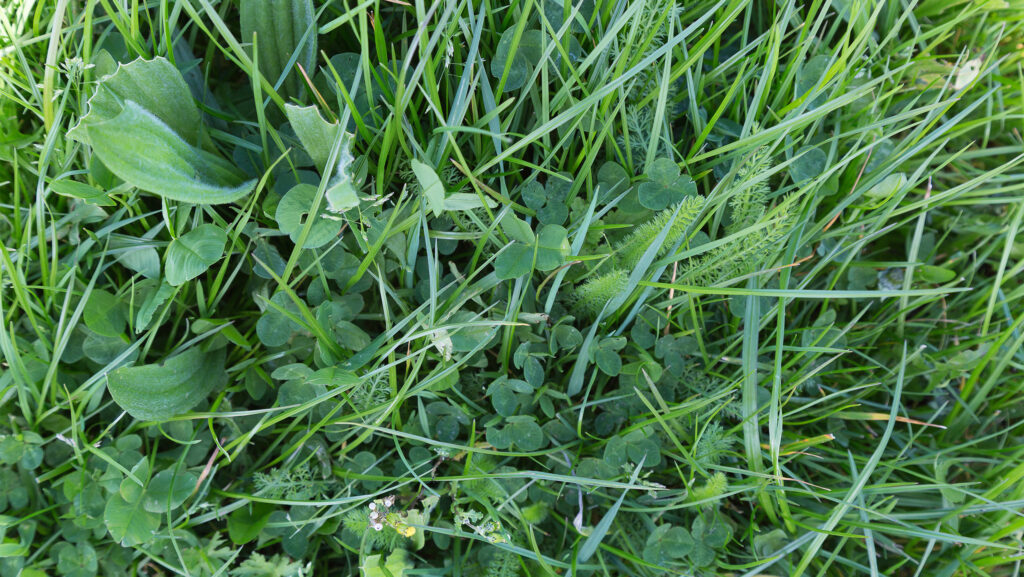Tips for growing multispecies leys from four-year study
 Herbal ley at Norton Court Farm © MAG/Judith Tooth
Herbal ley at Norton Court Farm © MAG/Judith Tooth New research findings have highlighted the role multispecies leys have in making farms more resilient to climate change.
The study sheds light on the importance of establishment timings, nitrogen applications and clover.
Germinal Horizon released the results from a four-year study at the Royal Association of British Dairy Farmers’ (RABDF’s) regenerative farming event, Down to Earth, held at the recent Grosvenor Farms in Cheshire (3 July).
See also: How multispecies swards can improve production efficiency
The trial at Germinal Horizon’s research facility in Melksham, Wiltshire, compared the performance of six mixes: perennial ryegrass (PRG); PRG and clover; and multispecies mixes containing eight, nine, 14 or 16 components.
The mixes were tested under two nitrogen fertiliser application rates of either 250kg N/ha or 150kg N/ha.
Some of the key findings were:
1. Multispecies come to the fore in the summer
PRG dominated in early season when herbs were not actively growing, while the value of multispecies showed during the summer (June to September) when PRG “shuts down” under drought conditions.
2. Adding clover can bring big benefits
The simple addition of white clover brought big yield benefits. PRG yielded 35.4t dry matter (DM)/ha over the four years, but adding clover raised that by 8.61t.
Using a multispecies and herb mix produced an extra 11.7t DM/ha over the same period.
3. Simpler mixes yield more
As multispecies swards became more complex, yields suffered.
The mix containing 16 components was the lowest yielding multispecies mix, growing 6t DM/ha less than grass and clover.
Dr Joanna Matthews, technical trials manager at Germinal Horizon Wiltshire, said: “Multispecies can bolster yields mid-season, even by just adding white clover.
“As the number of components increases, in later years, you are left with fewer primary herbs, and the lower content of base grasses in the seed mix at establishment penalises yield.”
4. Think carefully about nitrogen applications
On average, higher nitrogen application rates of 250kg N/ha a year only grew a total of 4t more over four years across the six mixtures, compared with those receiving 150kg N/ha a year (which mimics the amount of organic N applied by grazing animals).
“This extra 100kg of nitrogen would not be cost-effective when it only returns 1t/year,” said Joanna.
Higher N rates also reduced the level of clover in the sward, but they increased the amount of grass, chicory and plantain.
5. Establish herbs and clovers early
Herbs and clovers were “not quick out the blocks” and were best established before soil temperatures dropped in the winter.
Ideally, they should be established four to six weeks before a farm’s usual cut-off date for sowing grass.
“The research shows multispecies leys can make your grazing platform more resilient.
“By incorporating clover, you will see a yield benefit and can underpin the quality of the sward while fixing nitrogen,” she said.
